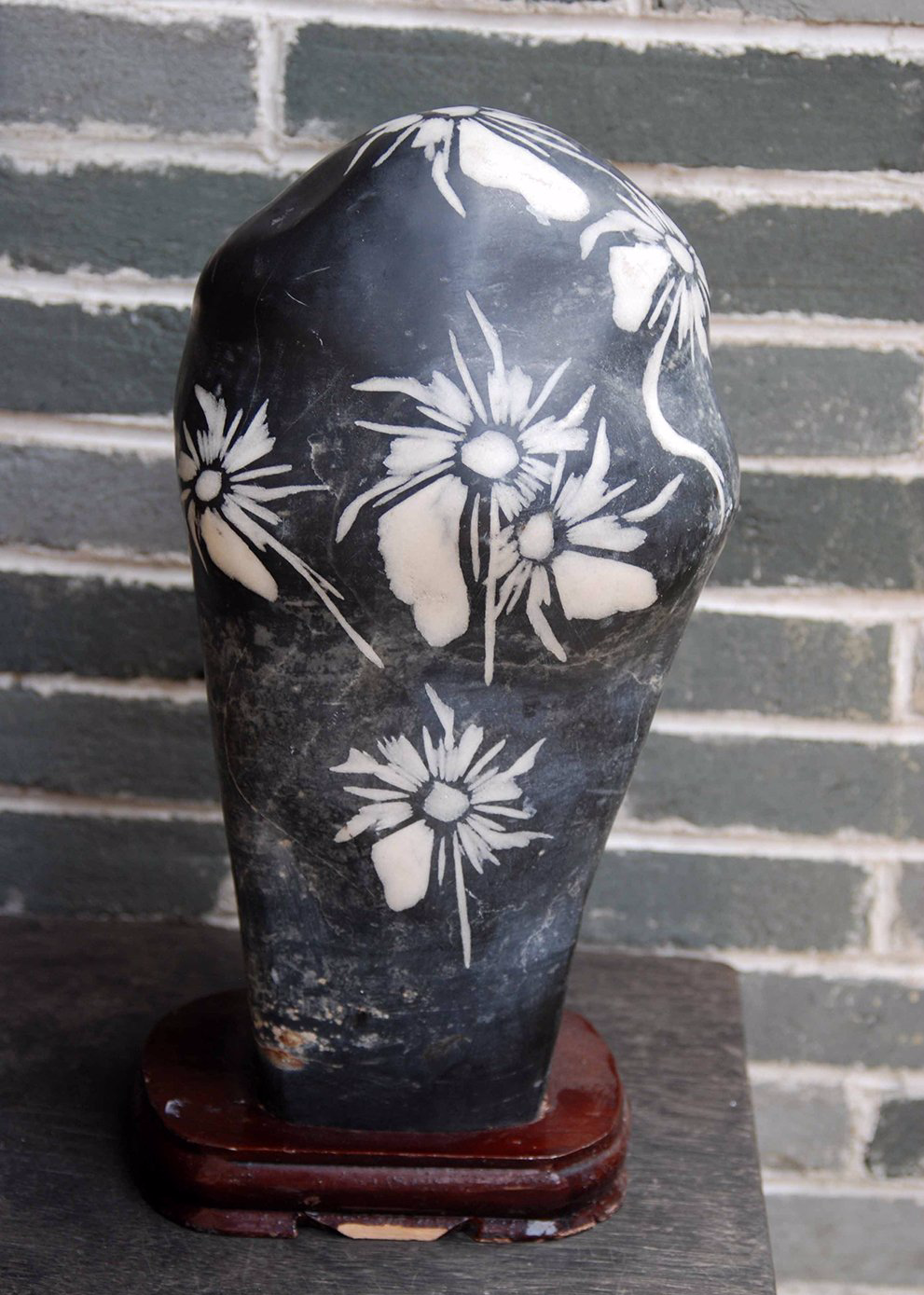Chinese Chrysanthemum Stones: True Permian Age Stones or Modern Imitations?A look at man-made imitations of Chinese Mum stones
By Thomas S. Elias, March, 2015
Chinese and Japanese chrysanthemum flower stones have been admired and collected in these countries for over 125 years. In China, these beautiful and fascinating stones were formed over 245 to 290 million years ago on shallow marine sea beds. The most common type is found in ancient Permian carbonate deposits throughout southern China. The three dimensional flower-like mineral formations form over several million years according to scientists at the China University of Geosciences in Wuhan, China. For a more detailed account, see Chrysanthemum Stones, The Story of Stone Flowers by Elias and Nakaoji (2010) which includes more technical accounts—a series of papers published by Professor Yan Jiaxin in the reference section in the book.
Most of the chrysanthemum flower stones found in stone markets throughout China are true products of the Permian period. But collectors should be aware that some stones sold as chrysanthemum flower stone are products of modern manufacturing techniques. While they are sold in markets and on eBay as chrysanthemum flower stones, they are not composed of ancient three dimensional celestite or calcite deposits. Instead, they appear to be made of a white stone, perhaps marble, that has been painted black except for the flower-like patterns. These are attractive and appealing stones, but they are not natural products formed in nature. Instead, they are 21st century crafted stone art. This was first reported in the March 2010 issue of Bao Zang (Treasure) magazine (pages 80-83) published by the Viewing Stones of China. Zhang Jiazhi wrote the article Scientific View of the Chrysanthemum Stone that described the different types of these stones. He pointed out and illustrated these man-made stones in this article. Later that year, Elias and Nakaoji also reported on these imitation Chinese chrysanthemum stones in their book.
Stones enthusiasts should be aware of these stones, especially if you are considering buying one of them for your collection. They can readily be distinguished from true chrysanthemum flower stones; these 21st century crafted stones do not have three-dimensional mineral deposits forming the flowers. Instead, they appear one-dimensional and flat. The flower-like petals on these stones are often shown curving gracefully. In the true Permian age, the mineral formations are straight, not curving. When I removed the imitation chrysanthemum stone in our collection from its base, the part of the stone around the base was completely white with a line where ink or paint was applied. I also noticed an amazing similarity to the imitation stones that I have seen in different Chinese markets over the last three years. There is little variation in the patterns, whereas the variety of patterns found in the natural stones is endless.
Caution is recommended when buying a chrysanthemum stone. If you are questing for a Permian age chrysanthemum stone, look for the three dimensional nature of the mineral formations and for straight crystal development. There is nothing wrong with purchasing a modern imitation of a chrysanthemum stone, but a knowledgeable buyer who is aware that it represents 21st century stone art will probably be happier for far longer with such a purchase.



